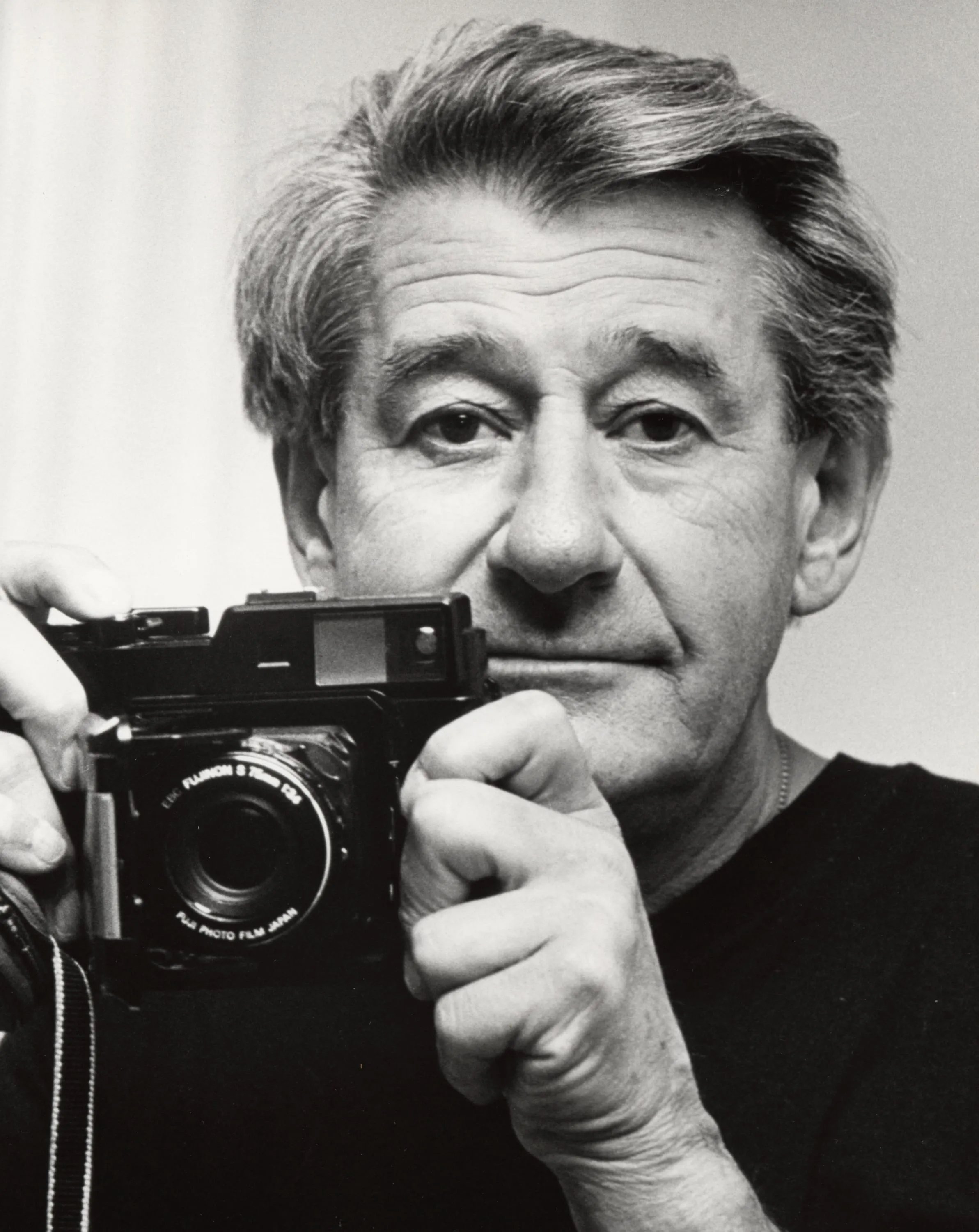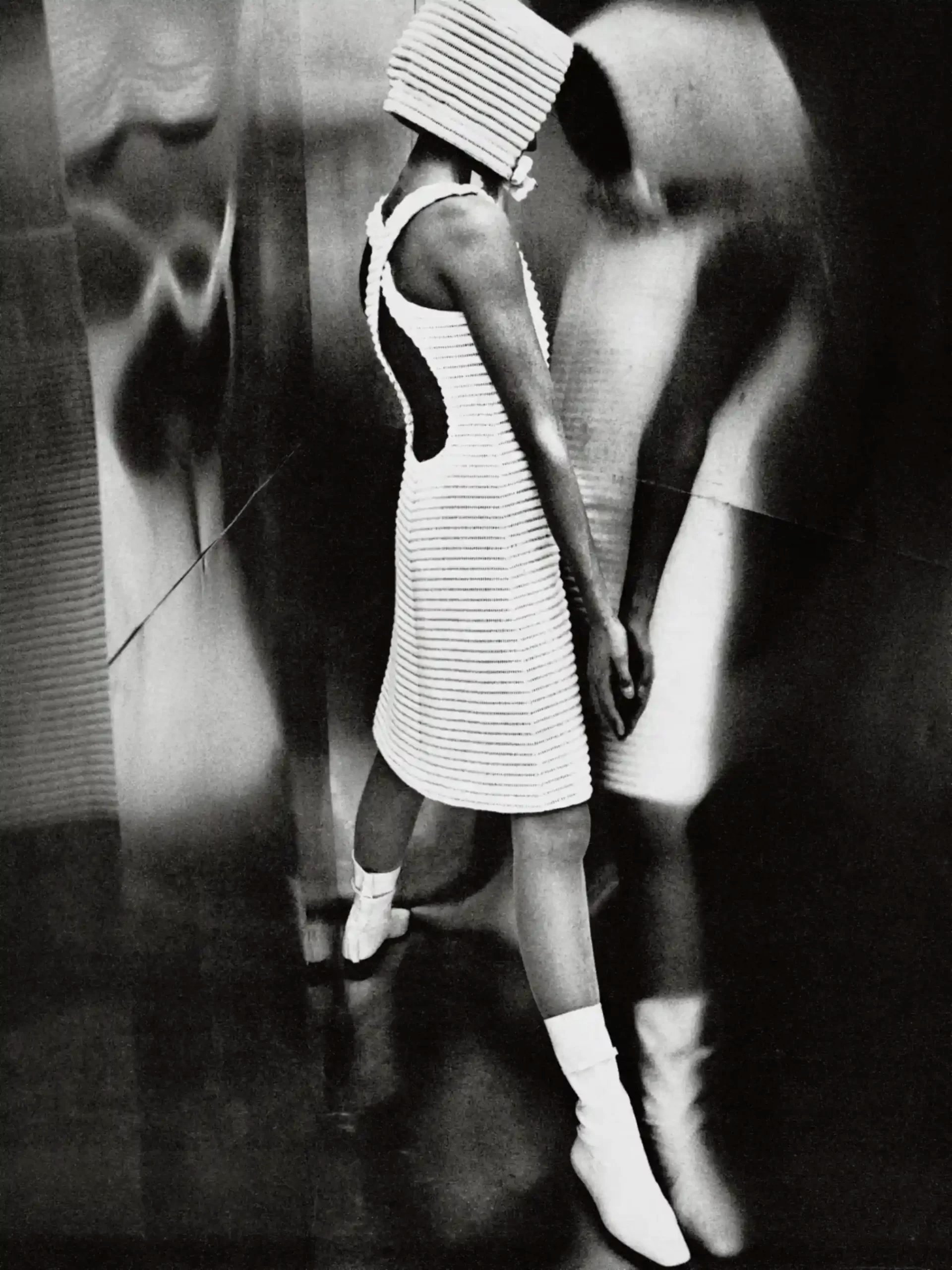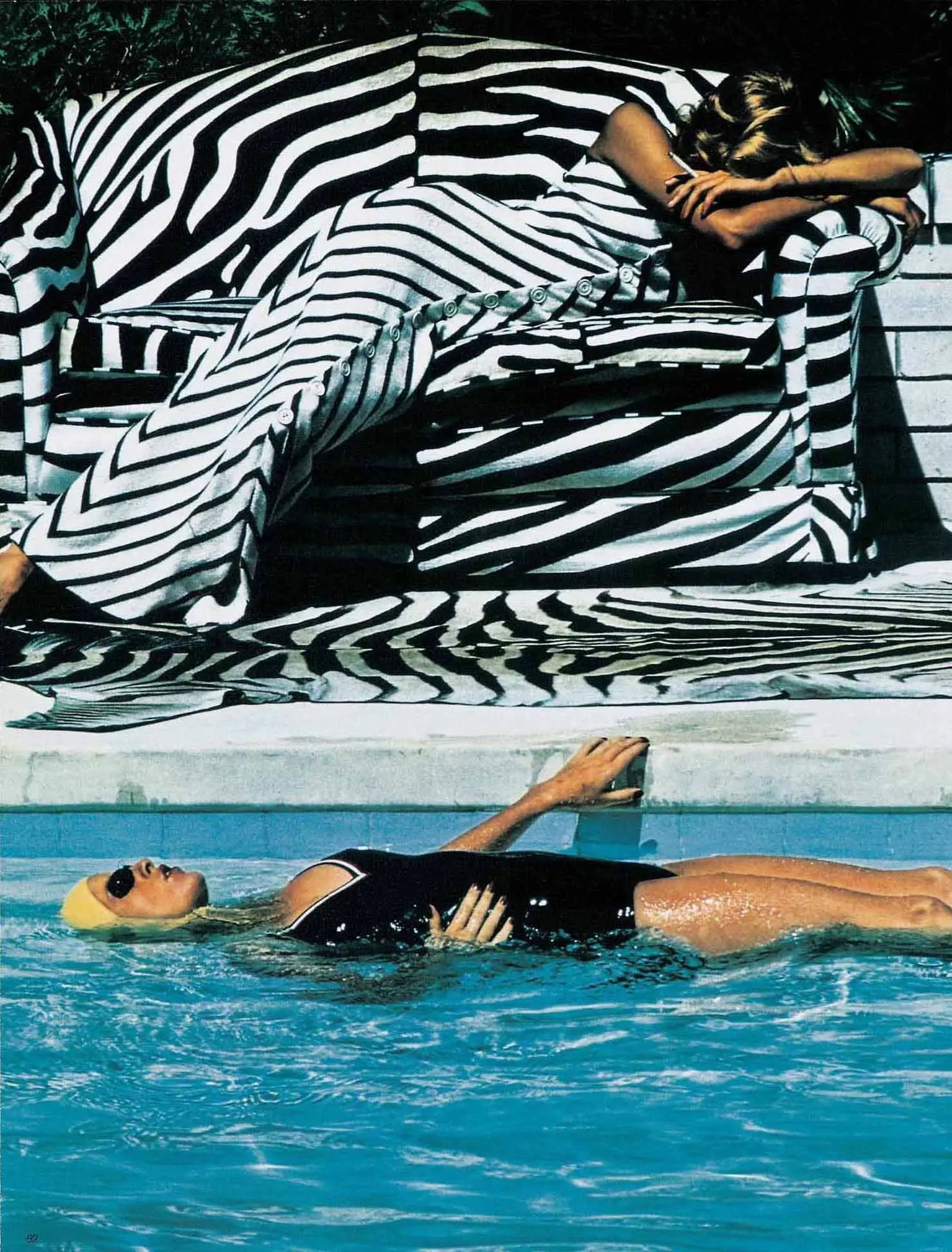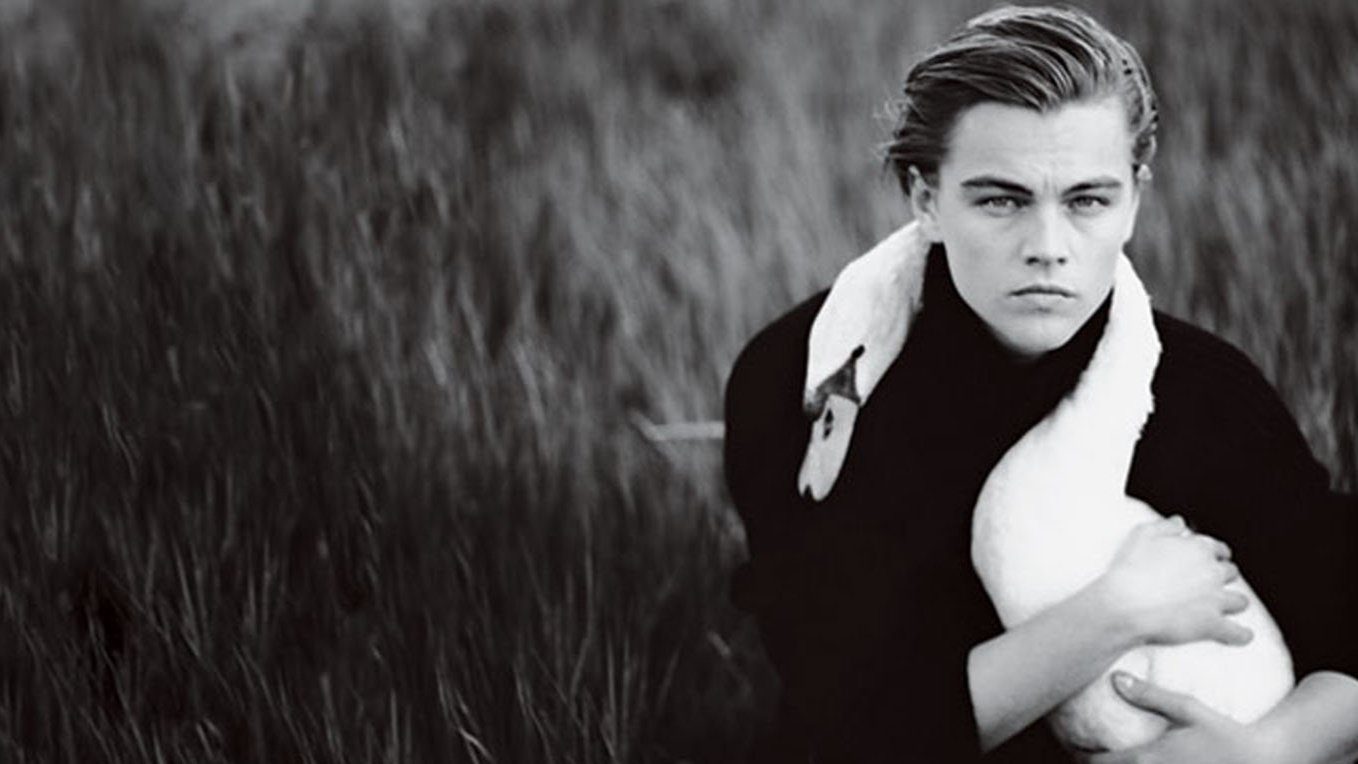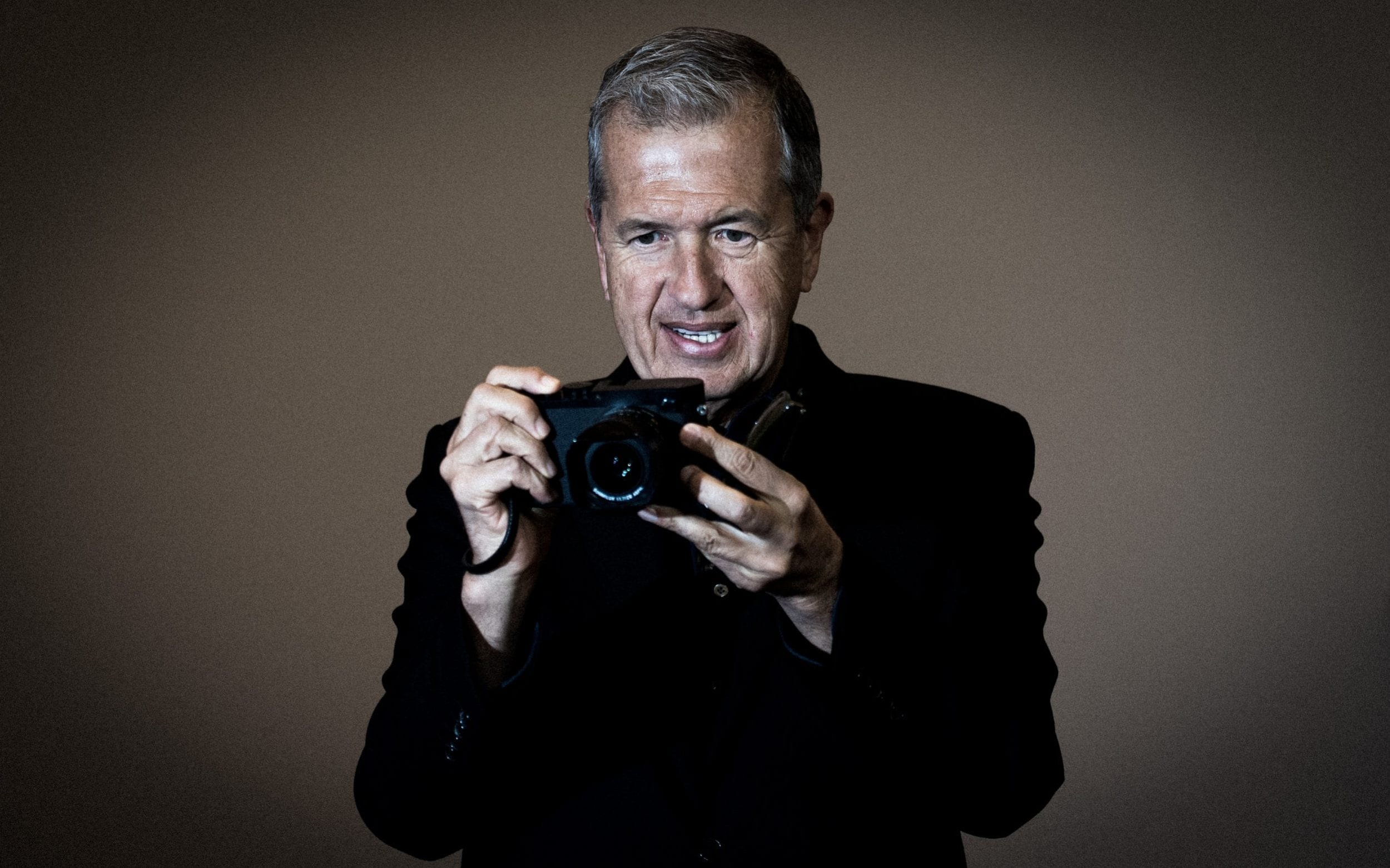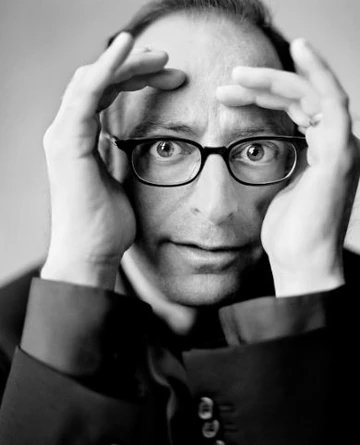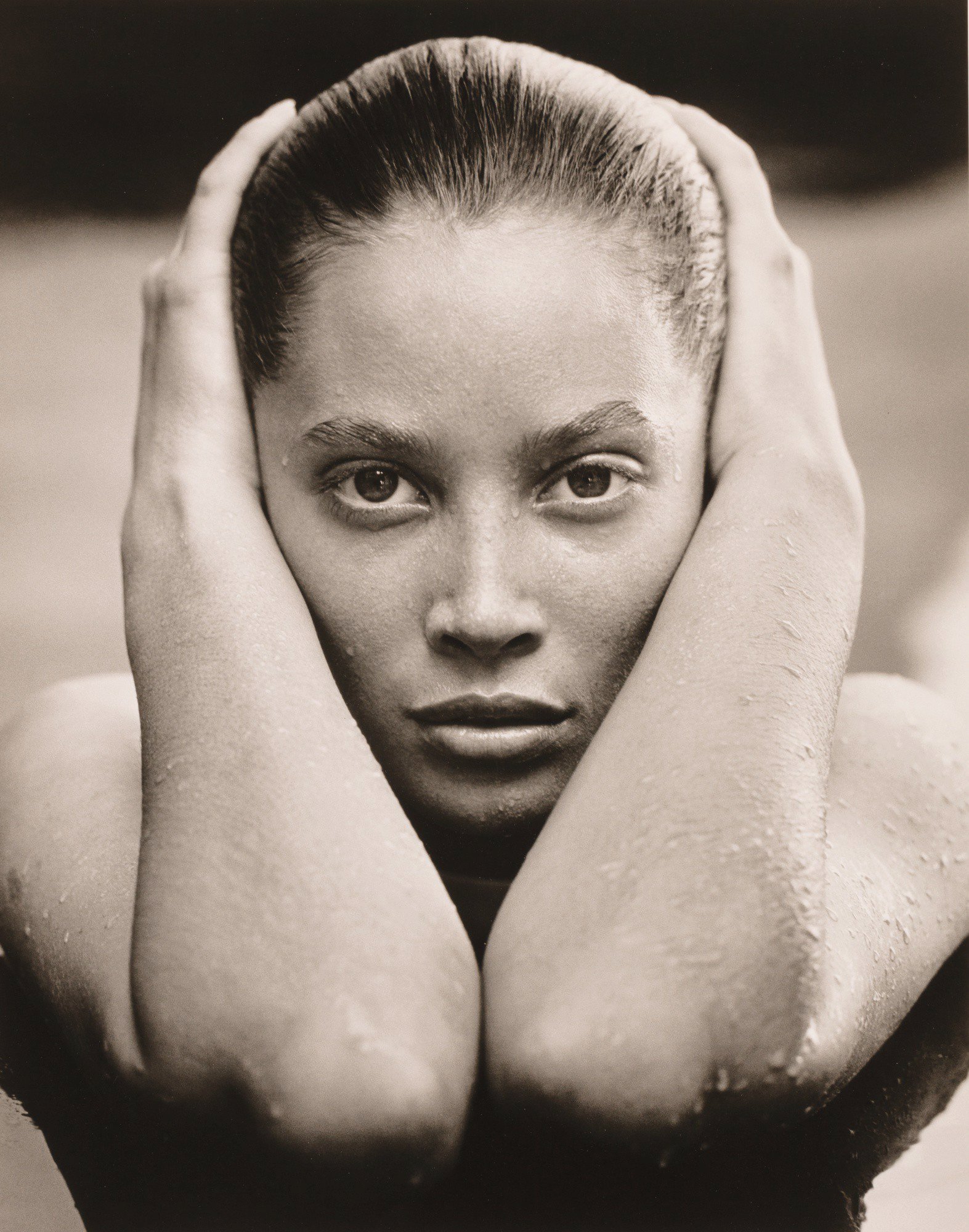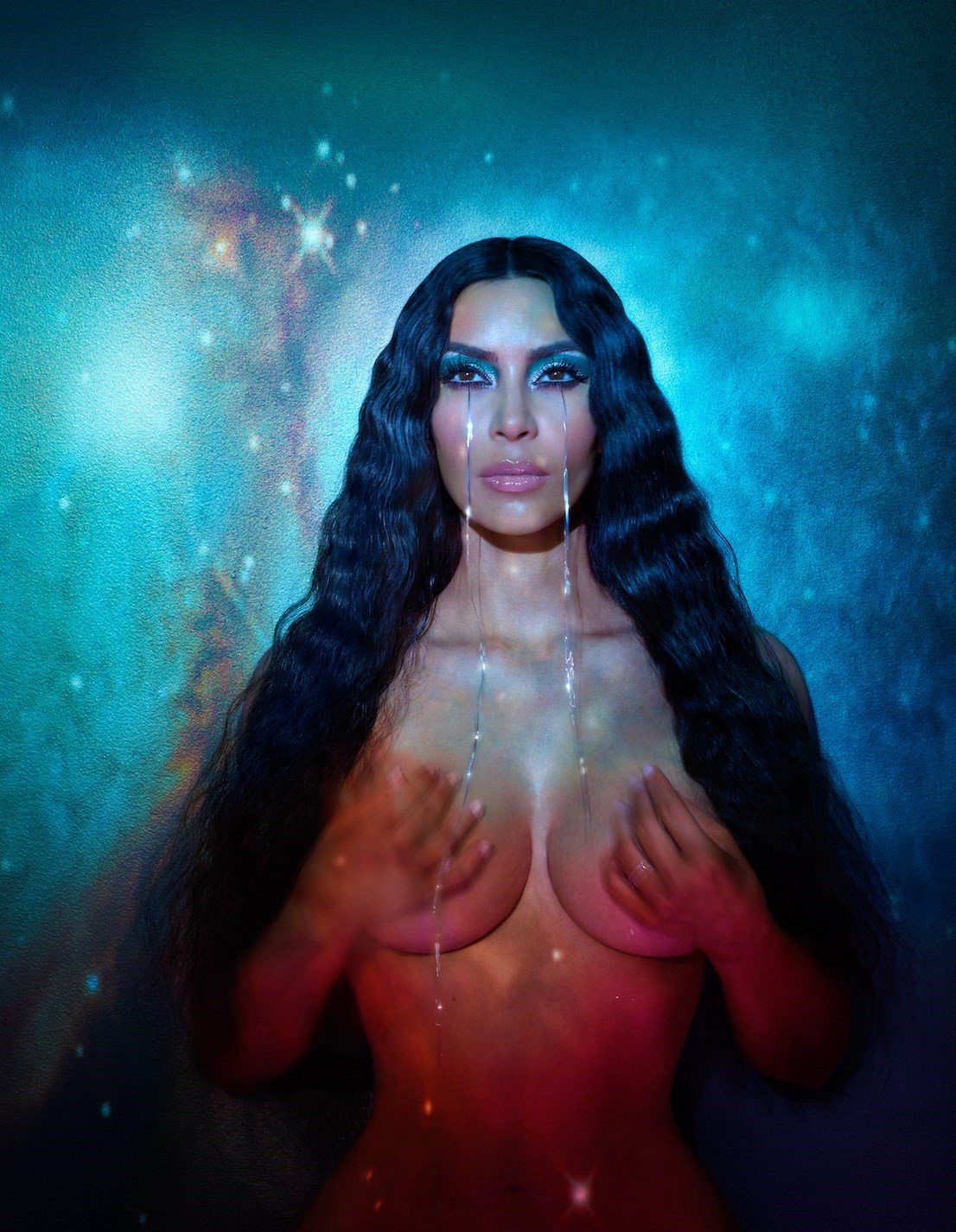Guy Bourdin
"I never think about the way I do things. I just do them."
Guy Bourdin was a groundbreaking French fashion photographer known for his innovative and provocative images that defied the conventions of the time. With his unique aesthetic and daring approach, Bourdin transformed fashion photography into a platform for artistic expression and storytelling, paving the way for future generations of photographers. His surreal and sometimes controversial imagery remains a significant influence on contemporary fashion photography, inspiring photographers such as Steven Meisel, Tim Walker, and Nick Knight.
Early Life and Career
Born in Paris in 1928, Guy Bourdin began his career as a painter, studying under the surrealist painter Maurice Tabard. In the early 1950s, he transitioned to photography and became an apprentice to the legendary photographer Man Ray. Under Man Ray's guidance, Bourdin developed his distinctive style, combining elements of surrealism, sensuality, and narrative storytelling.
In 1955, Bourdin had his first major breakthrough when his work caught the attention of French Vogue's editor-in-chief, Edmonde Charles-Roux. This marked the beginning of a long and successful collaboration with the magazine, where he regularly created visually striking and evocative editorials.
Photographic Style and Techniques
Guy Bourdin's photographic style was heavily influenced by his background in surrealism and painting. He often incorporated fantastical elements, vivid colors, and bold compositions into his images, creating a dreamlike atmosphere that was both captivating and disconcerting.
Bourdin's work often featured themes of desire, mystery, and tension. He was known for pushing the boundaries of what was considered acceptable in fashion photography, frequently exploring darker and more provocative subject matter. His images often depicted models in unusual and sometimes uncomfortable situations, challenging conventional notions of beauty and glamour.
Career Highlights
Throughout his career, Guy Bourdin collaborated with numerous prestigious fashion houses and brands, such as Chanel, Yves Saint Laurent, and Charles Jourdan. His groundbreaking campaigns for Charles Jourdan in the 1970s are particularly noteworthy for their innovative use of narrative and surreal imagery.
In 1985, Bourdin was awarded the Grand Prix National de la Photographie by the French Ministry of Culture, recognizing his significant contributions to the field of photography.
Photography Gear
Though specific details about Guy Bourdin's photography gear are scarce, it is known that he favored medium format cameras such as the Hasselblad and Rolleiflex for his work.
Published Works and Photo Books
"Guy Bourdin: A Message for You" This book showcases Guy Bourdin's groundbreaking fashion photography, focusing on his innovative use of color and storytelling. "A Message for You" offers valuable insights into Bourdin's creative process and how he shaped modern fashion photography, making it an essential resource for aspiring photographers.
"Guy Bourdin: In Between" "In Between" features a collection of Bourdin's lesser-known works, revealing a more intimate side of his photography. This book emphasizes the importance of experimentation and personal expression in developing a unique photographic style, offering inspiration for photographers looking to push their own boundaries.
"Guy Bourdin: Polaroids" This collection of Guy Bourdin's Polaroid images provides a raw and unfiltered look at his creative process. The candid nature of these images offers valuable insights into Bourdin's techniques, making "Polaroids" a fascinating resource for photographers interested in exploring the potential of instant film.
"Guy Bourdin: Untouched" "Untouched" presents a selection of Guy Bourdin's early black-and-white photographs, revealing the origins of his distinctive style. This book provides a rare glimpse into Bourdin's evolution as a photographer, offering valuable inspiration and insights for those looking to develop their own visual language.
"Exhibit A: Guy Bourdin" "Exhibit A" is a comprehensive retrospective of Guy Bourdin's work, spanning his entire career. This book showcases his innovative approach to fashion photography, highlighting his unique use of composition, color, and narrative. "Exhibit A" serves as an invaluable resource for photographers seeking to understand and emulate Bourdin's groundbreaking techniques.
Quotes
"I never think about the way I do things. I just do them."
"The camera is the continuation of your eye."
"I don't want to be a photographer. I want to be a painter."
"Surrealism is not a method. It's a state of mind."
"The most important thing for a photographer is to see things others don't see."
Legacy and Influence
Guy Bourdin's innovative and provocative approach to fashion photography has left an indelible mark on the industry, inspiring countless photographers to experiment with surrealism, narrative, and unconventional subject matter. His work has influenced a new generation of fashion photographers, including Steven Meisel, Tim Walker, and Nick Knight, who have each cited Bourdin as a significant inspiration in their own careers.
In conclusion, Guy Bourdin's lasting legacy in fashion photography is evident in the work of numerous contemporary photographers who continue to push the boundaries of the genre. His daring and innovative approach to storytelling, surrealism, and the exploration of darker themes has left an indelible mark on the world of photography, inspiring generations of artists to follow in his footsteps.
Helmut Newton
"I hate good taste. It's the worst thing that can happen to a creative person."
Helmut Newton was a groundbreaking fashion photographer who pushed the boundaries of the medium, creating striking and often controversial images that captured the imagination of the fashion world. Known for his provocative and erotically charged work, Newton revolutionized the way fashion was portrayed in magazines and advertising, earning him a place among the most influential photographers of the 20th century.
Early Life and Career
Born in Berlin in 1920 as Helmut Neustädter, Newton was raised in a Jewish family. He developed an interest in photography at a young age and began an apprenticeship with German fashion photographer Yva (Else Simon) at the age of 16. However, his photography career was interrupted by World War II, during which his family fled Nazi Germany, and he eventually settled in Australia.
After the war, Newton established a photography studio in Melbourne and began to gain recognition for his work, primarily through his contributions to Australian Vogue. He later moved to London, where he worked for British Vogue, before finally settling in Paris, where he shot for various publications such as Vogue, Harper's Bazaar, and Elle.
Photographic Style and Techniques
Helmut Newton's photographic style was characterized by its provocative and often sexually charged content, earning him the nickname "The King of Kink." He frequently depicted strong, powerful women in dominant roles and was known for his innovative compositions, using unusual angles and dramatic lighting to create a sense of tension and voyeurism in his images.
Newton's work was heavily influenced by his experiences in pre-war Berlin, with its decadent and hedonistic atmosphere, as well as by the German Expressionist movement and the dark glamour of film noir. He often incorporated elements of surrealism and fetishism into his photography, blurring the lines between fashion, art, and erotica.
Career Highlights
Newton's work in the 1960s and 1970s was highly sought after by leading fashion magazines and brands, with his images gracing the covers of Vogue and other publications.
His iconic photograph "Le Smoking" (1975), featuring a woman in a Yves Saint Laurent tuxedo, became a symbol of female empowerment and a defining image of the era.
Newton's provocative images of women in high heels and provocative poses for the book "White Women" (1976) garnered international attention and solidified his status as a groundbreaking fashion photographer.
In the 1980s and 1990s, Newton continued to push boundaries with his work, such as his series of life-sized female mannequins, further exploring themes of sexuality and power dynamics.
Photography Gear
Helmut Newton primarily used medium-format cameras, such as the Rolleiflex and Hasselblad models, which allowed him to capture detailed images with a unique depth of field. He often employed a combination of natural light and carefully positioned studio lights to create his signature dramatic and moody scenes.
Published Works and Photo Books
"Helmut Newton: Celebrating 20 Years of Sumo" This book commemorates the 20th anniversary of Helmut Newton's groundbreaking "Sumo" publication. Showcasing his unique, provocative style, it provides inspiration and insights into Newton's approach to fashion, portraiture, and nude photography, making it an essential resource for photographers looking to push boundaries.
"Helmut Newton. Legacy" "Legacy" is a comprehensive retrospective of Helmut Newton's illustrious career, featuring images that define his style and impact on the world of photography. This collection offers valuable insights into Newton's techniques and creative vision, providing inspiration for photographers who seek to develop their own unique perspectives.
"Newton, Riviera" In this collection, Helmut Newton captures the glamour and elegance of the French Riviera. The book showcases Newton's distinctive approach to fashion and lifestyle photography, offering valuable inspiration for photographers looking to capture the essence of a location and its culture.
"Helmut Newton: A Gun for Hire" This book focuses on Newton's work as a commercial photographer, highlighting his ability to create provocative, unforgettable images for advertising campaigns. "A Gun for Hire" serves as a valuable resource for photographers seeking to understand Newton's methods and how to apply them to their own commercial projects.
"Helmut Newton: Work" "Work" is a comprehensive exploration of Newton's career, showcasing his iconic photographs across fashion, portraiture, and nude photography. This book provides valuable insights into the creative process and techniques of one of the most influential photographers of the 20th century.
"Helmut Newton: Polaroids" In this collection, Helmut Newton offers a rare glimpse into his creative process through a selection of his Polaroid images. This unique compilation reveals Newton's raw and unedited vision, providing inspiration and insights for photographers interested in exploring the potential of instant film and candid photography.
Quotes
"My job as a portrait photographer is to seduce, amuse, and entertain."
"The camera is a remarkable instrument. Saturate yourself with your subject, and the camera will all but take you by the hand and point the way."
"What I find interesting is working in a society with certain taboos — and fashion photography is about that kind of society. To have taboos, then to get around them — that is interesting."
"Photography, like writing, is about storytelling. Some stories are better told in pictures, and some are better told in words."
"I hate good taste. It's the worst thing that can happen to a creative person."
Legacy and Influence
Helmut Newton's bold, provocative style has had a lasting impact on the world of fashion photography, inspiring generations of photographers to push boundaries and explore new ways of portraying beauty and sexuality. His unique visual language has influenced numerous photographers, including Steven Meisel, Ellen von Unwerth, and Mario Sorrenti, who have all incorporated elements of Newton's style into their own work.
In addition to his contributions to fashion photography, Newton also left a lasting legacy through the establishment of the Helmut Newton Foundation in Berlin. The foundation serves as a museum and archive dedicated to preserving his work and promoting the appreciation of photography as an art form.
Newton's influence can still be seen in contemporary fashion photography, with many photographers continuing to explore themes of power, sexuality, and voyeurism in their work. His daring approach to capturing the human form and his dedication to challenging societal norms have solidified his place as one of the most important and influential photographers of the 20th century.
Mario Testino
"The most important thing for a photographer is to know his subject."
Mario Testino (website), a name synonymous with the world of high-fashion photography, has captured the imagination of millions with his iconic images of models, celebrities, and royalty. Born in Lima, Peru, in 1954, Testino has since become one of the most celebrated and influential fashion photographers of our time. His vibrant, dynamic, and captivating images have graced the pages of countless fashion magazines and helped to shape the visual language of the fashion industry.
Early Life and Career
Growing up in Lima, Testino found himself drawn to the world of photography from an early age. After completing his studies in Peru, he moved to London in 1976, where he began to pursue his passion for photography in earnest. Testino initially struggled to find his footing in the competitive industry, working odd jobs and taking on freelance assignments. However, his big break came in the early 1990s when he was commissioned to photograph Princess Diana for Vanity Fair. This assignment catapulted him into the international spotlight and marked the beginning of his illustrious career.
Photographic Style and Techniques
Mario Testino's photographic style is characterized by his innate ability to capture the essence of his subjects in a glamorous and sophisticated manner. His images often exude a sense of luxury and refinement, with a keen eye for detail and a flair for composition. Testino is known for his masterful use of natural light, which imbues his images with warmth and depth, while his expert manipulation of color and contrast adds vibrancy and life to his photographs.
One of Testino's trademarks is his ability to forge a strong connection with his subjects, which allows him to bring out their true personalities and create images that resonate with viewers. His talent for storytelling and creating visually compelling narratives has made him a highly sought-after photographer in the world of fashion, where he has worked with some of the most prestigious brands and publications.
Career Highlights
Throughout his career, Mario Testino has photographed countless celebrities, models, and members of the royal family, earning him a reputation as one of the industry's most prolific and respected photographers. Some of his most notable collaborations include working with fashion houses such as Gucci, Burberry, and Versace, as well as shooting editorials for Vogue, Vanity Fair, and Harper's Bazaar.
Testino has also released several successful photography books, including "Any Objections?" (1998), "Front Row/Backstage" (1999), and "Kate Moss by Mario Testino" (2010), which showcase his unique vision and distinctive style.
Photography Gear
Canon EOS-1D X Mark II DSLR Camera
Canon EF 24-70mm f/2.8L II USM Lens
Canon EF 70-200mm f/2.8L IS II USM Lens
Profoto lighting equipment
Leica cameras
Published Works and Photo Books
Mario Testino's work has been published extensively in leading fashion magazines and he has also released several photography books, including:
"Mario Testino: Portraits" This stunning collection of portraits by Mario Testino showcases his exceptional ability to capture the essence of his subjects. The book features images of celebrities, models, and other public figures, offering inspiration and valuable insights for photographers looking to enhance their portrait skills.
"Let Me In!" In this intimate collection, Mario Testino provides an exclusive look into the private lives of some of the world's most famous celebrities. Testino's candid, behind-the-scenes photography offers unique insights into his techniques and approach, inspiring photographers to capture the authenticity of their subjects.
"Kate Moss by Mario Testino" This book is a stunning tribute to the enduring collaboration between Mario Testino and the iconic model, Kate Moss. Showcasing their work together over two decades, this collection highlights Testino's ability to capture the true essence of his subjects, making it a valuable resource for photographers seeking inspiration in fashion photography.
"Front Row Back Stage" Taking readers behind the scenes of the fashion world, Mario Testino captures the excitement and glamour of runway shows and backstage preparations. This book offers a unique perspective on fashion photography, providing valuable insights for photographers interested in exploring this genre.
"Alive" In "Alive," Mario Testino showcases his incredible talent for capturing the energy and spirit of his subjects. The book features a diverse array of images, from fashion to travel and beyond, offering inspiration and techniques for photographers looking to infuse their work with a sense of vitality and life.
"Mario Testino. Ciao. Omaggio All'italia" In this beautiful homage to Italy, Mario Testino captures the essence of the country's culture, fashion, and landscape. This collection is a treasure trove of inspiration for photographers looking to explore the rich visual language of Italy and expand their skills in travel and fashion photography.
Quotes
"The most important thing for a photographer is to know his subject."
"Fashion is about dreaming and making other people dream."
"My favorite words are possibilities, opportunities, and curiosity."
"I like to keep the spontaneity in my work, as well as the surprise."
"In a way, fashion photography is like telling a story with images."
Legacy and Influence
Mario Testino's impact on the world of fashion photography is undeniable, and his work continues to inspire both established and aspiring photographers alike. His iconic images have left an indelible mark on the industry, and his unique style and approach to photography have influenced countless photographers who have followed in his footsteps.
Some of the photographers with a similar style include Steven Meisel, Mert Alas and Marcus Piggott, Patrick Demarchelier, and Annie Leibovitz. Testino's dedication to his craft, his ability to capture the essence of his subjects, and his innovative techniques have solidified his position as a true master of fashion photography.
In conclusion, Mario Testino's remarkable career and body of work have left a lasting impression on the fashion industry, and his influence continues to be felt by photographers around the world. Aspiring photographers can learn from Testino's approach to storytelling, his ability to connect with his subjects, and his mastery of light and color to create their own captivating images.
Herb Ritts
"In the end, I still believe there's a place for what I do, and for the type of images I make.”
Herb Ritts (1952-2002) was an American fashion photographer known for his elegant, minimalist, and beautifully crafted images. With a career that spanned over two decades, Ritts became one of the most sought-after and respected photographers in the fashion industry. His work graced the covers of prestigious magazines like Vogue, Vanity Fair, and Rolling Stone and featured in numerous advertising campaigns for luxury brands such as Giorgio Armani, Calvin Klein, and Chanel.
Early Life and Career
Herb Ritts was born and raised in Los Angeles, California. He studied economics and art history at Bard College in New York, but it wasn't until he moved back to Los Angeles and started taking pictures of his friends that he discovered his passion for photography. In the late 1970s, Ritts began to work as a fashion photographer, quickly establishing his distinctive style and gaining recognition for his work. By the 1980s, he had become a leading figure in the world of fashion photography, collaborating with top models, celebrities, and designers.
Photographic Style and Techniques
Herb Ritts' photographic style is characterized by its simplicity, elegance, and strong graphic compositions. He often used natural light to create a sense of warmth and intimacy in his images, and his choice of black-and-white photography contributed to the timeless quality of his work. Ritts had a talent for capturing the essence of his subjects, whether they were models, actors, or musicians, and his portraits conveyed a sense of honesty and vulnerability that resonated with viewers.
Career Highlights
Throughout his career, Herb Ritts photographed some of the most iconic figures of his time, including Madonna, Cindy Crawford, and Christy Turlington. He also directed music videos, such as Madonna's "Cherish" and Chris Isaak's "Wicked Game," which showcased his signature visual style. In 1991, Ritts was awarded the prestigious International Center of Photography's Infinity Award for Applied Photography. His work has been exhibited in major galleries and museums worldwide, including the Museum of Fine Arts in Boston and the Getty Museum in Los Angeles.
Photography Gear
Medium format cameras: Ritts often used medium format cameras such as the Hasselblad 500C/M, which provided high-resolution images and allowed him to achieve exceptional detail in his photographs.
Lenses: Ritts typically used prime lenses with focal lengths ranging from 80mm to 150mm, which allowed him to create the sharp, crisp images he was known for.
Natural light: Ritts was a master of using natural light, often shooting outdoors or near large windows to take advantage of the available light and create a warm, intimate atmosphere in his images.
Photography Books
"Herb Ritts: L.A. Style": This book celebrates Herb Ritts' distinctive style, capturing the glamour and allure of Los Angeles through his iconic fashion and celebrity photography. For practicing photographers, the book serves as a valuable source of inspiration, showcasing Ritts' mastery of composition, lighting, and portraiture.
"Notorious": In this collection, Herb Ritts presents a captivating array of celebrity portraits, displaying his unique ability to reveal the essence of his subjects. This book can help photographers refine their approach to portraiture, encouraging them to search for the authentic and unexpected in their own work.
"Herb Ritts: Men/Women": This book offers a fascinating exploration of Ritts' black-and-white photography, capturing the beauty and strength of the human form. This volume provides insight into Ritts' approach to composition and lighting, inspiring to push the boundaries of creative practice.
"Herb Ritts: Work": This retrospective showcases the breadth of Ritts' career, offering a comprehensive overview of his diverse body of work. By studying Ritts' evolution as an artist, photographers can gain valuable insight into the development of their own unique styles and visual narratives.
"Duo": In this collection, Herb Ritts presents intimate and striking portraits of celebrity couples, capturing the chemistry and connection between them. The book serves as a valuable resource for photographers looking to enhance their skills in capturing emotion and the dynamics between subjects in their own portraiture.
"Africa": In this visually stunning book, Ritts turns his lens to the landscapes, wildlife, and people of Africa. The collection offers photographers a chance to study Ritts' keen eye for composition and his ability to evoke emotion through imagery, encouraging them to explore new subjects and settings in their own work.
Quotes
"I think knowing people by first names, not by what they do sexually, is really what it's about. Not being afraid. Fear is the enemy. I've always said that a camera is a great shield. When you have a camera in your hand, you feel like you're protected."
"For me, a photograph is most successful when it doesn't answer all the questions and leaves something to be desired."
"With photography, I like to create a fiction out of reality. I try and do this by taking society's natural prejudice and giving this a twist."
"In the end, I still believe there's a place for what I do, and for the type of images I make. I think people will always be drawn to the human form, to the beauty of the human body."
"I always liked the simplicity of things. The most fun I had was doing portraits and nudes outdoors with natural light."
Legacy and Influence
Herb Ritts left an indelible mark on the world of fashion photography, and his iconic images continue to inspire new generations of photographers. His emphasis on simplicity, elegance, and the beauty of the human form has influenced the work of many contemporary photographers.
Other notable photographers with similar style are:
Peter Lindbergh, known for his cinematic, black-and-white portraits of models and celebrities
Bruce Weber, celebrated for his sensual and intimate images of male and female models
Annie Leibovitz, whose dramatic, stylized portraits have become synonymous with Vanity Fair and Rolling Stone covers
Steven Meisel, a prolific fashion photographer with a penchant for storytelling and pushing boundaries in his images
Herb Ritts' timeless photographs serve as a testament to his exceptional talent and his enduring impact on the world of fashion photography. His legacy lives on through the countless photographers who continue to be inspired by his work and through the unforgettable images he left behind.
David LaChapelle
"If you want reality, take the bus."
David LaChapelle is an American photographer and director known for his vibrant, surreal, and often provocative images that challenge the boundaries of traditional fashion photography. With a career spanning more than three decades, LaChapelle has worked with some of the most iconic celebrities and brands, creating images that are instantly recognizable for their unique visual language.
Early Life and Career
David LaChapelle was born in 1963 in Fairfield, Connecticut. He was drawn to art from a young age, and as a teenager, he moved to New York City to pursue his passion for photography. He attended the North Carolina School of the Arts and the Art Students League of New York before landing his first professional photography job at the age of 17, when he was hired by Andy Warhol to shoot for Interview Magazine.
LaChapelle's early work caught the attention of the fashion industry, and he soon began shooting for major publications like Vogue, GQ, Rolling Stone, and Vanity Fair. Throughout his career, LaChapelle has collaborated with numerous high-profile brands, including Versace, Levi's, and MAC Cosmetics, and has photographed countless celebrities such as Madonna, Lady Gaga, and Rihanna.
Photographic Style and Techniques
LaChapelle's photographic style is characterized by its vibrant colors, elaborate sets, and surreal concepts. His images often contain elements of fantasy and kitsch, and he frequently explores themes such as consumerism, religion, and sexuality.
To achieve his signature aesthetic, LaChapelle meticulously constructs his scenes, using intricate set design, lighting, and post-production techniques to create images that are both visually stunning and thought-provoking. His work is often compared to the paintings of the Old Masters, with its strong use of chiaroscuro and emphasis on composition.
Career Highlights
Some of David LaChapelle's most notable career achievements include:
Having his work exhibited at prestigious institutions such as the Barbican Museum in London, the Musée de La Monnaie in Paris, and the Whitney Museum of American Art in New York
Directing music videos for artists like Christina Aguilera, Britney Spears, and Moby
Receiving numerous awards, including the American Photography Award and the Art Directors Club Award
Photography Gear
While specific gear used by David LaChapelle may vary from project to project, some of the equipment commonly associated with his work includes:
Medium format cameras such as the Hasselblad 503CW
35mm cameras like the Canon EOS 5D Mark IV
Studio lighting equipment, including Profoto strobes and softboxes
Adobe Photoshop for post-production work
Published Photo Books
"LaChapelle Land": David LaChapelle's first monograph showcases his unique, surreal, and often provocative style. The book provides photographers with inspiration for pushing creative boundaries and exploring new concepts in their own work. Owning this book can broaden the visual language of photographers and help them stand out in the industry.
"Hotel LaChapelle": In this visually stunning book, David LaChapelle takes readers on a journey through a fantastical world of fashion and celebrity photography. By examining LaChapelle's innovative compositions and lighting techniques, photographers can learn to create striking images that captivate the viewer and tell compelling stories.
"LaChapelle. Heaven to Hell": This book offers a comprehensive overview of LaChapelle's career, covering a wide range of his photographic work. Owning this book can help photographers gain insight into the development of LaChapelle's unique vision and encourage them to explore their own distinctive styles and ideas.
"David LaChapelle. Lost + Found. Part I": In this volume, David LaChapelle showcases previously unpublished photographs that explore themes of consumerism, fame, and societal excess. By studying LaChapelle's work, photographers can learn to convey powerful messages through their images and develop a more meaningful connection with their audience.
"David LaChapelle: Good News": This book features a collection of LaChapelle's spiritually inspired photographs that challenge the viewer's perceptions of reality. This book can encourage photographers to experiment with symbolism and visual storytelling, adding depth and substance to their work.
"David LaChapelle Stern Portfolio (Stern Fotografie Portfolio)": This special edition portfolio highlights some of LaChapelle's most iconic images, showcasing his mastery of color, composition, and visual narrative. This collection can serve as a valuable source of inspiration and a reminder of the limitless possibilities in the world of photography.
Quotes
"If you want reality, take the bus."
"I believe in a visual language that should be as strong as the written word."
"Fashion can be a celebration of human beauty and creativity."
"I never wanted to shoot fashion; I wanted to create images that were narrative, like movie stills."
"I think that we live in a time where it's easier to be suspicious of dedicated people, because the world and people and beliefs can often disappoint you."
Legacy and Influence David LaChapelle has left an indelible mark on the world of fashion photography with his unique, surreal, and provocative images. His work has influenced countless photographers, and his distinctive visual style continues to inspire both established and emerging artists. While it's impossible to list all those who have been impacted by LaChapelle's work, some other notable photographers with similar styles include Miles Aldridge, Steven Klein, Pierre et Gilles, and Nick Knight.
From his humble beginnings as a teenager in New York City to his status as a world-renowned photographer, David LaChapelle has consistently pushed the boundaries of fashion photography, creating unforgettable images that challenge conventions and captivate viewers. His influence on the photography world is undeniable, and his work continues to inspire and provoke discussion among both industry professionals and photography enthusiasts alike.













